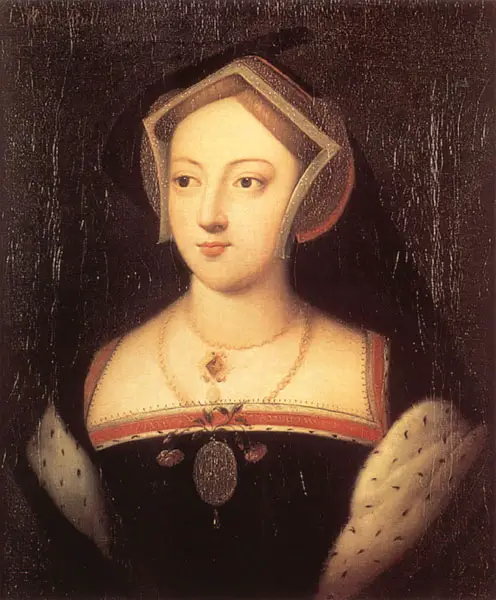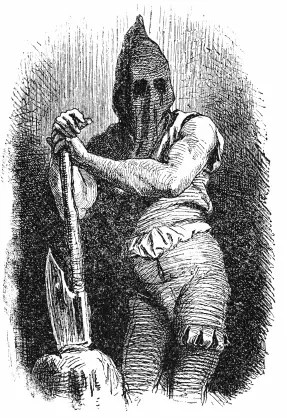How much do you know about the artists and art of the Tudor court? Test your knowledge with this fun quiz.
Tudor art and artists
Correct! Whitehall Palace, where it had been painted on one of the walls of the staterooms in 1537, burnt down in 1698. A cartoon (sketch) still survives.
Wrong! It was destroyed by fire. Whitehall Palace, where it had been painted on one of the walls of the staterooms in 1537, burnt down in 1698. A cartoon (sketch) still survives.
Correct! It is a head and shoulders portrait.
Wrong! It's in the Museo Thyssen-Bornemisza in Madrid.
Correct!
Wrong! It was Nicholas Hilliard.
Correct!
Wrong! It was Lucas Horenbout.
Correct!
Wrong! It was Hans Holbein the Younger.
Correct!
Wrong! It was Isaac Oliver.
Correct! It is distorted and can only be viewed properly from a specific angle from the side.
Wrong! It is anamorphic, i.e. it is distorted and can only be viewed properly from a specific angle from the side.
Correct! The painting was commissioned by Sir Henry Lee, the Queen's Champion from 1559-90, whose house was at Ditchley near Oxford.
Wrong! It's Oxfordshire. The painting was commissioned by Sir Henry Lee, the Queen's Champion from 1559-90, whose house was at Ditchley near Oxford.
Correct!
Wrong! She is holding a sieve.
Correct!
Wrong! It was Lucas Horenbout.



I may be splitting hairs, but I think there are two answers to this question. The Whitehall cartoon in the National Portrait Gallery may well predate the completion of the Museo Thyssen Bornemisza smaller oil on panel portrait.
http://www.npg.org.uk/collections/search/portraitLarge/mw03080/King-Henry-VIII-King-Henry-VII
This virtually life size cartoon has the pin holes which were made so Holbein could transfer his design onto the wall in Whitehall. But was it created before the Madrid portrait?
The Museo Thyssen-Bornemisza image of Henry, http://assets.museothyssen.org/img/colecciones/obras_maestras/mediana/1934.39.jpg is dated 1537 and is clearly worked from the same set of sketches that Holbein uses for the Whitehall mural, which we know from other sources was completed in 1537. The NPG states that the mural was probably created in anticipation of Prince Edward’s birth and as a statement of the Tudor dynasty.
Since the cartoon can still be defined as a portrait as it is an ink & watercolour representation of Henry VIII, my money is on the mural coming first and then Holbein creating the Madrid portrait after Jane Seymour’s death as a way of showing prospective brides just what they might be marrying.
However, it depends on what you think is the definition of a portrait. Is it a representation of someone done in any medium, or does it have to be an oil on panel? If you think the latter, then all photographs in the NPG (including selfies) cannot be classed as portraits.
Hi Mell,
By portrait I meant a finished work or a work that was meant to be a portrait in itself, rather than a preparatory sketch which is what the cartoon was and the final painting that the sketch is based on is not extant, but perhaps I could have been clearer. I talk about the cartoon in the quiz too. I’m not an art expert at all so my definition is probably ‘off’. The cartoon didn’t have the features that I would expect to see in a portrait and wasn’t meant to serve as one itself.
Thanks Claire.
The locket around Henry’s neck appears in both portrayals of him. I wonder who is hidden inside? Perhaps it is Jane – and painted by Holbein?
Hi Mell, It may well be Jane in the locket, as after all he stated she was his best loved wife. But from the POV that she gave him the one thing neither Katherine or Anne could give him, a son. So it would stand to reason he would have wanted some memento to her. Or it might be a picture of his mother who perhaps was the only woman who he could/would truly love unselfishly.
I do think “enry’s love was very fickle one day it would be all hearts and flowers, the next all chopping blocks and axes.
Christina of Denmark certainly had the right idea – marry someone else!
I wondered whether it was Prince Edward, purely because having a legit heir was what Henry craved. The cynic in my thinks that his ‘best loved ‘ wife protestations were because Jane died, so after the cartoon. But that’s me being a cynic!
It is unlikely to be his mother, unless Horenbout or Holbein had painted a miniature of her from a panel portrait, as miniatures only become popular in the mid 1520s when the Horenbouts come to England. However, both Lucas & Susannah Horenbout & Holbein were around in the 1530s and all were quite capable of painting miniature portraits. Holbein’s were the best.
On the subject of Question 2, the cartoon of Henry VIII in the National Portrait Gallery dates from 1537 and the portrait in Madrid only says c.1537 and it is doubtful it is the one in Henry’s inventory that was a companion portrait to that of Jane Seymour’s painted in late 1536, according to my book ‘Holbein in England’; 2006, so it appears that the cartoon almost certainly came first.
The cartoon was saved so it could be reproduced whilst the one of Jane Seymour and Elizabeth of York was destroyed as Henry VIII (the only living person at the time from the mural) was in high demand. But as Claire says it depends how you personally define the term ‘portrait’.
I too marked the cartoon as my answer lol.
The pendant Henry wears shows no sign of a hinge or catch. I have doubts its a locket but just a pendant. I think there was no reason for Henry to hide Jane Seymour. She was painted posthumously by his side in the ‘Family of Henry VIII’ at Hampton Court Palace, so why would he shut/hide her in a locket? Some portraits have cryptic messages but there would be more obvious than a shut locket. She was the acknowledged mother of his son. He would be eager to show her off. But as Henry wears it in several paintings/sketches is simply proof that they originated from the same drawing(s) rather than being a jewel containing a favourite wife.
Tara, I seem to have started quite a debate! It is likely the hinge was created in such a way that you could not see it. The symbolism of miniatures is something I’m fascinated by, especially the cryptic ones. It’s taken me on some very arcane research into medieval bestiaries, the writings of Cicero & his relationship with Atticus, Virgil, Livy, Seneca etc.
I agree the template was the same for all the various “School of Holbein” portrayals of Henry, but this was usual and no doubt, Holbein’s workshop was very busy. The Walker Gallery version is a brilliant example
That Henry chose to wear the locket/medallion for the initial sitting and we can assume he would have approved the cartoon, which does suggest he wore it is a matter of course. But this doesn’t answer the question of who (if it is a locket) is inside it. I still think it is a locket because he was the leader of fashion and miniatures & lockets to keep them in were in great demand by every follower of fashion. There are some great Holbein designs for some in the British Museum. Plus, you only have to look at Hilliard’s extant lockets (The Drake & Lyte Jewels for example) to see the level of workmanship of both the lockets and the portraits inside to see how our first English artist of international fame aspired to emulate Holbein. Hilliard tells us he has modelled himself on the master in his treatise.
If you get really close to the ‘Family of Henry VIII’ look at their eyes. The artist has given them all blue eyes and we know that Elizabeth had brown! I wonder if Holbein had a market in selling templates of the Royal family?
I too clicked NPG (LOL & much embarrassment), but then my definition of a portrait is quite loose. Claire is the quiz master so I abide by her rules (well try to anyway!).
I’ve changed the answers that people can choose from so as to remove the NPG as an answer to try and halt the confusion. You’re the art historian, Mell, so I bow down to you! 😉
I do not like using the term debate. It’s a fascinating discussion. I am forever digging deeper and deeper into the Tudor portraits and there’s invaluable things we can learn from others by having talks like this. I have my own views but I do appreciate those of others and take them on board. I’d always love to hear more from Claire, Melanie and anyone else on this fascinating topic 🙂